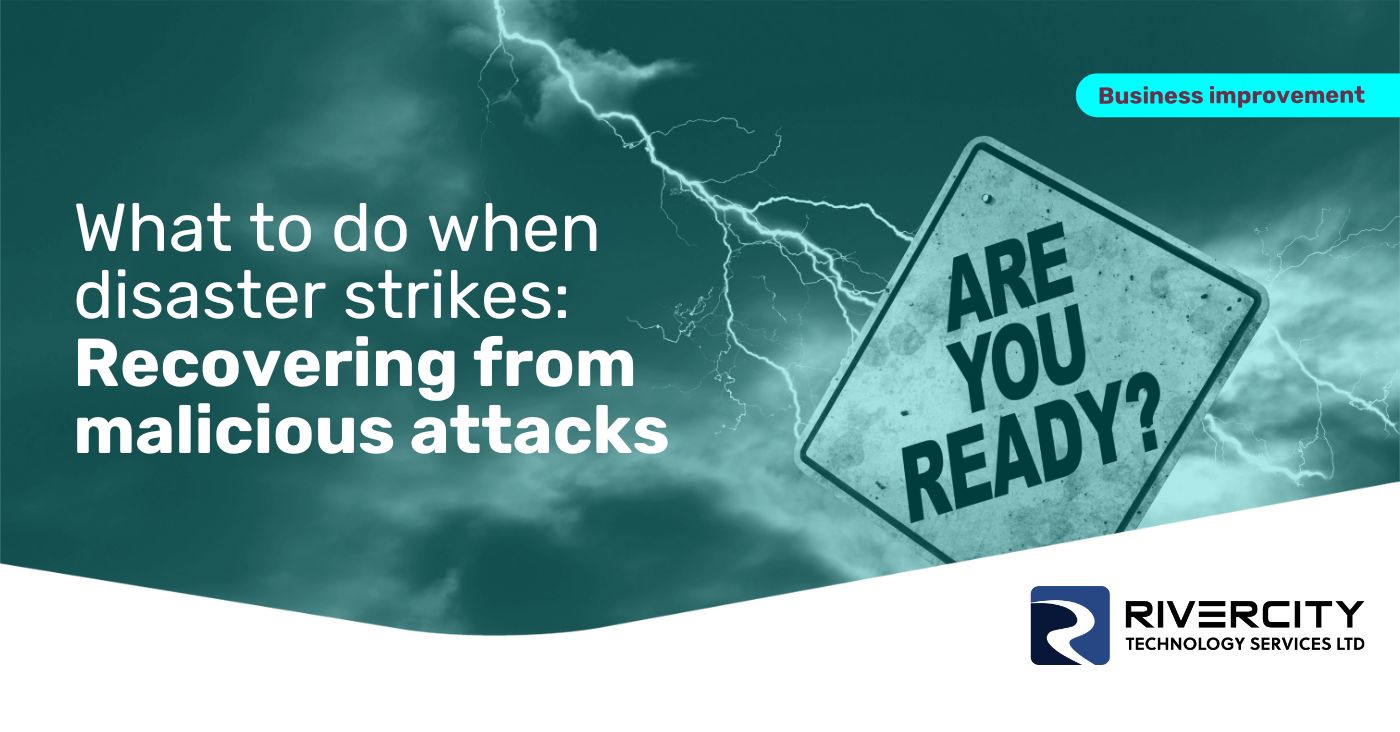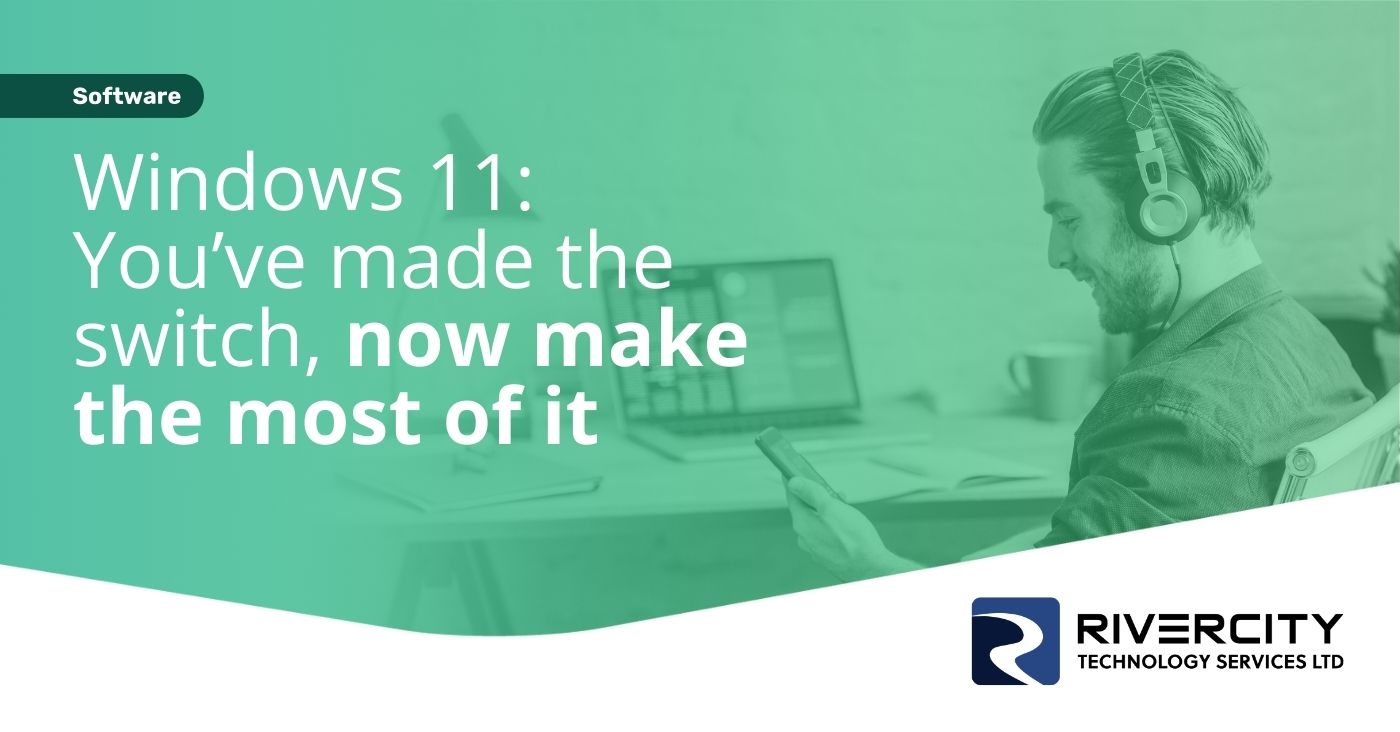As business owners, we do everything we can to keep our businesses secure. We invest in security tools, train our teams to spot scams and stay alert to threats.
But here’s the uncomfortable truth: No system is ever completely safe from attack.
Why?
Because cybersecurity is a constant balancing act. If you locked down everything so tightly that nobody could ever break in, it would also be nearly impossible for you to use your own systems.
At the end of the day, your business needs to function. You and your team need to be able to send emails, access files, and collaborate with customers without jumping through endless tiring security hoops.
Cyber criminals are smart, and their tactics are constantly evolving. No matter how careful you are, they will always look for new ways to break in. And sometimes, despite your best efforts, they’ll succeed.
This is why cybersecurity isn’t just about keeping attackers out - it’s about having a plan for what happens if they get in. If your business gets attacked, the speed and effectiveness of your response can mean the difference between a minor inconvenience and a full-blown disaster.
Why every business needs a recovery plan
Imagine this:
You get to the office and turn on your computer. You’re ready to dive into work, then you see this message:
“Your data has been encrypted. Pay $50,000 in Bitcoin to restore access.”
Everything is locked down. You can’t process orders, respond to customers, or access your files. Your team is stuck, unsure what to do. Panic sets in.
You’ll start asking yourself questions:
- What’s happened here?
- Do we have backups?
- Who do we need to notify?
- How can we limit the damage?
- How long will it take to recover?
What makes a good recovery plan?
A strong recovery plan covers everything you need to respond effectively to cyber attacks. It helps you understand which systems are critical, where your business’s weak spots are, and what steps you should take if an attack happens.
Here’s what your recovery plan should include:
- Risk Assessment
- Business Impact Analysis
- Incident Response Procedure
- Communication Strategy
- Recovery Strategy
- Backup Operations
- Roles and Responsibilities
- Testing & Drills
- Compliance Considerations
The cost of not having a plan
Some businesses assume they’ll just figure it out if the time comes… but recovery without a plan is messy, slow, and expensive.
A cyber attack can cost a small business thousands, not just in lost revenue, but also in legal fees, fines, and reputation damage.
If your systems are down for days, customers may go elsewhere and never return. If their data is exposed, they may lose trust in your business altogether. And if you’re found to have mishandled sensitive information, you could face legal consequences.
The good news is that businesses that prepare for attacks recover much faster, and often with minimal damage.
How cyber attacks happen
Most cyber attacks start with human error.
One of the biggest threats is phishing – fraudulent emails that trick employees into clicking dangerous links or entering their passwords on fake websites. These emails can look like invoices, messages from colleagues, or alerts from service providers, making them easy to fall for.
Then there’s ransomware, which locks up your files and demands payment to unlock them. If you don’t have backups, this kind of attack can be devastating to your business.
Insider threats are also a risk. A single weak password, a lost laptop, or an ex-employee who still has access to your systems can all put your business in danger.
And it’s not just data breaches you need to worry about. Outdated software, poorly secured Wi-Fi networks, and unpatched systems can all be exploited by cyber criminals.
What to do if an attack happens
The longer it takes to respond to an attack, the worse the damage – financially, operationally, and to your reputation.
A clear incident response plan outlines exactly what to do, who is responsible, and how to recover quickly. Without one, confusion takes over, time is wasted, and mistakes can make things worse.
Here are the five key phases of incident response:
- Preperation
- Detection & Analysis
- Containment
- Eradication & Recovery
- Learning from the Attack
Preventing future attacks
Once the crisis is over, ask: How do we stop this from happening again?
A post-incident review will highlight weaknesses in your defences. Assess what worked, what didn’t, and where you need to improve – whether that’s stronger passwords, better training, or more advanced security tools.
Cyber criminals often target the same businesses repeatedly, especially if they know there are weaknesses. Strengthening security through regular audits, better access controls, and employee training reduces the risk of another attack.
Don’t think of recovery as getting back to normal, think of it as making “normal” more secure than it was before.
Start protecting your business today
f you don’t have a cyber security recovery plan yet, don’t panic. You can start taking steps towards it right now.
First, identify your most critical data and systems. Which parts of your business can’t you function without? These are the things you need to protect the most.
Next, check your backup strategy. If ransomware hit your business tomorrow, could you restore your files? If your backups aren’t secure and immutable, now’s the time to upgrade them.
After that, enable multi-factor authentication (MFA) wherever possible. This is where you use a code on another device to prove it’s you. This adds an extra layer of protection, making it much harder for attackers to break in.
Employee training is another key step. Since most cyber attacks succeed due to human error, a short awareness session on how to spot phishing emails and create strong passwords can make a big difference. You can go on to plan regular, in-depth training later.
Finally, start drafting a basic recovery plan. Even a simple document outlining who to contact, what to check, and how to access backups can save you precious time in a crisis.
Of course, you’ll want to create a full and thorough strategy too – but taking these steps in the meantime gets you off to a good start. And if you need expert help building a detailed protection and recovery plan, we can do that.
Cyber attacks are a reality of doing business today, but they don’t have to lead to disaster. With the right preparation, you can minimize damage, recover quickly, and help protect your business’s future.
If you’re unsure where to start, we can talk you through it. Whether you need better backups, stronger security, or a full incident response plan, we’d be happy to support you. Get in touch.






















